Physical Address
304 North Cardinal St.
Dorchester Center, MA 02124
Herpes simplex virus (HSV) keratitis is the most frequent cause of unilateral corneal blindness and the most frequent indication for keratoplasty in developed countries.
HSV keratitis is a complex, multifaceted disease, and successful treatment requires a clear understanding of the disease, close postoperative follow-up, and proper therapeutic strategy.
Control of both inflammation and viral recurrence is mandatory prior to the placement of a corneal graft in HSV keratitis.
Patients undergoing transplantation for herpetic keratitis should receive oral antiviral prophylaxis to optimize graft survival.
Deep anterior lamellar keratoplasty (DALK) has shown promise in corneal transplantation for herpetic keratitis.
In developed countries, herpes simplex virus (HSV) keratitis is an important cause of unilateral loss of vision from corneal disease. It is also listed among the most frequent indications for keratoplasty, especially in the stromal form of the disease ( Fig. 125.1 ). Five-year survival data from the Australian Corneal Graft Registry indicate that grafts for HSV corneal scarring that do not have viral recurrence have a survival rate of 83%. Allograft rejection is the primary cause of graft failure (46%–64%); viral recurrence decreases the survival rate to about 15%, and active inflammation at the time of grafting to 45%.
The indications for corneal transplantation in HSV keratitis include removal of corneal scarring and reestablishment of the integrity of the globe. The objective of grafting for corneal scarring is the restoration of visual acuity and, although controversial, removal of antigenic corneal tissue that may eventually cause repeated immunologic or inflammatory episodes. An optimal recurrence-free or inflammation-free interval for transplantation of such cases has not yet been determined, but an interval of at least 6 months from the last inflammatory episode is recommended. HSV keratitis may evolve to stromal melting with subsequent thinning and perforation ( Fig. 125.2 ). Perforated eyes need immediate treatment to restore anatomic integrity and avoid the development of complications such as endophthalmitis or secondary glaucoma. Conservative management of a small corneal perforation can be undertaken with tissue adhesive and/or a therapeutic soft contact lens. A large perforation will ultimately require tectonic/therapeutic keratoplasty.
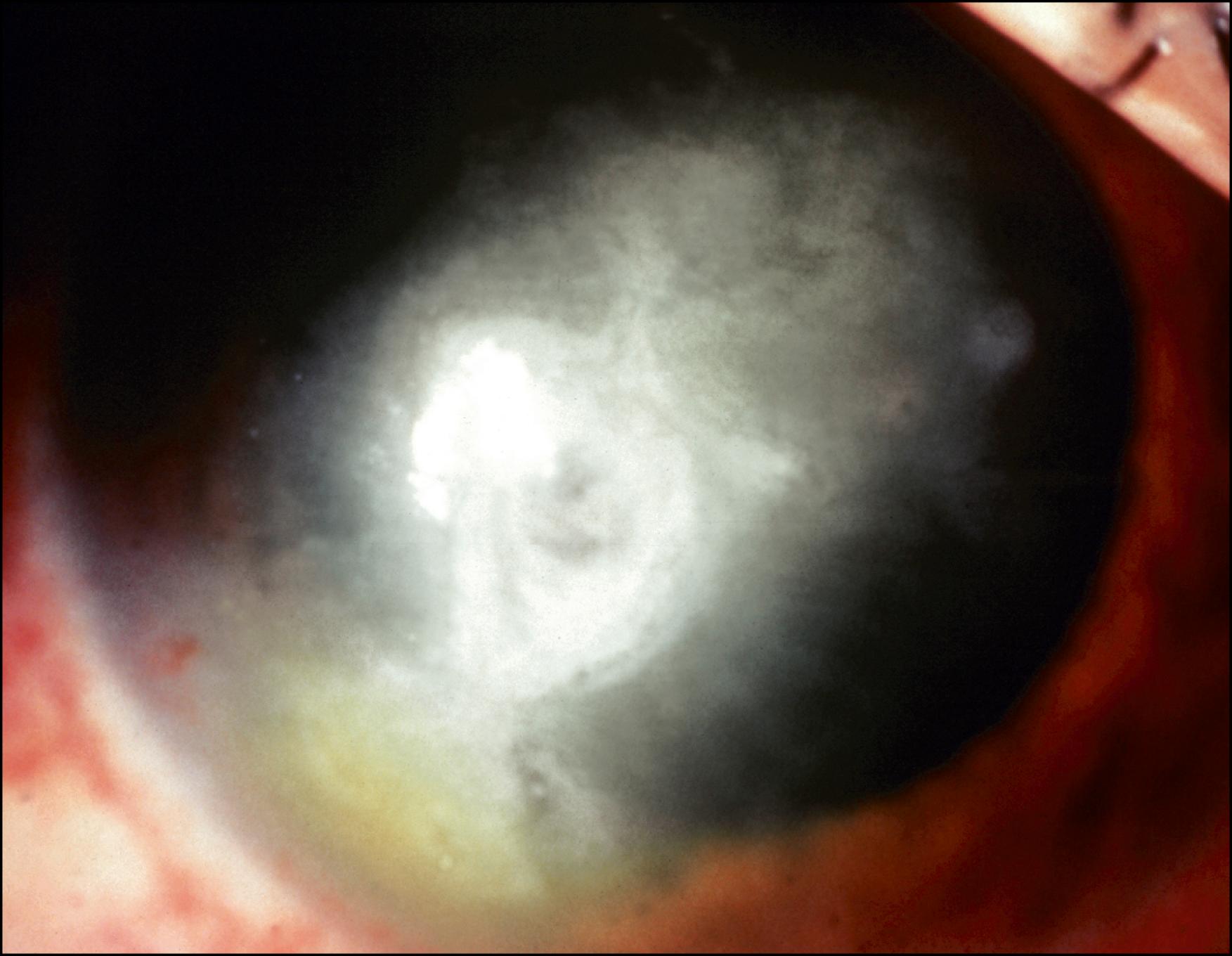
Patients requiring tectonic/therapeutic keratoplasty may be divided into two groups: group I, with severe stromal inflammation, who do not respond to medical treatment and progress to perforation, and group II, with corneal perforation secondary to persistent epithelial defect and little or no active stromal inflammation. In the latter group, surgery tends to be more successful in restoring the structural integrity of the eye with a clear graft in comparison with group I. Therefore in group I, it would be more appropriate to manage with tissue glue ( Fig. 125.3 ), a conjunctival flap, or a lamellar corneal patch graft for imminent perforation and later to perform an optical penetrating keratoplasty (PK) (see Fig. 125.3 ). This may allow a more favorable eye condition with less inflammation for a definitive PK. In both groups, oral antiviral prophylaxis must be used for a prolonged period postoperatively.
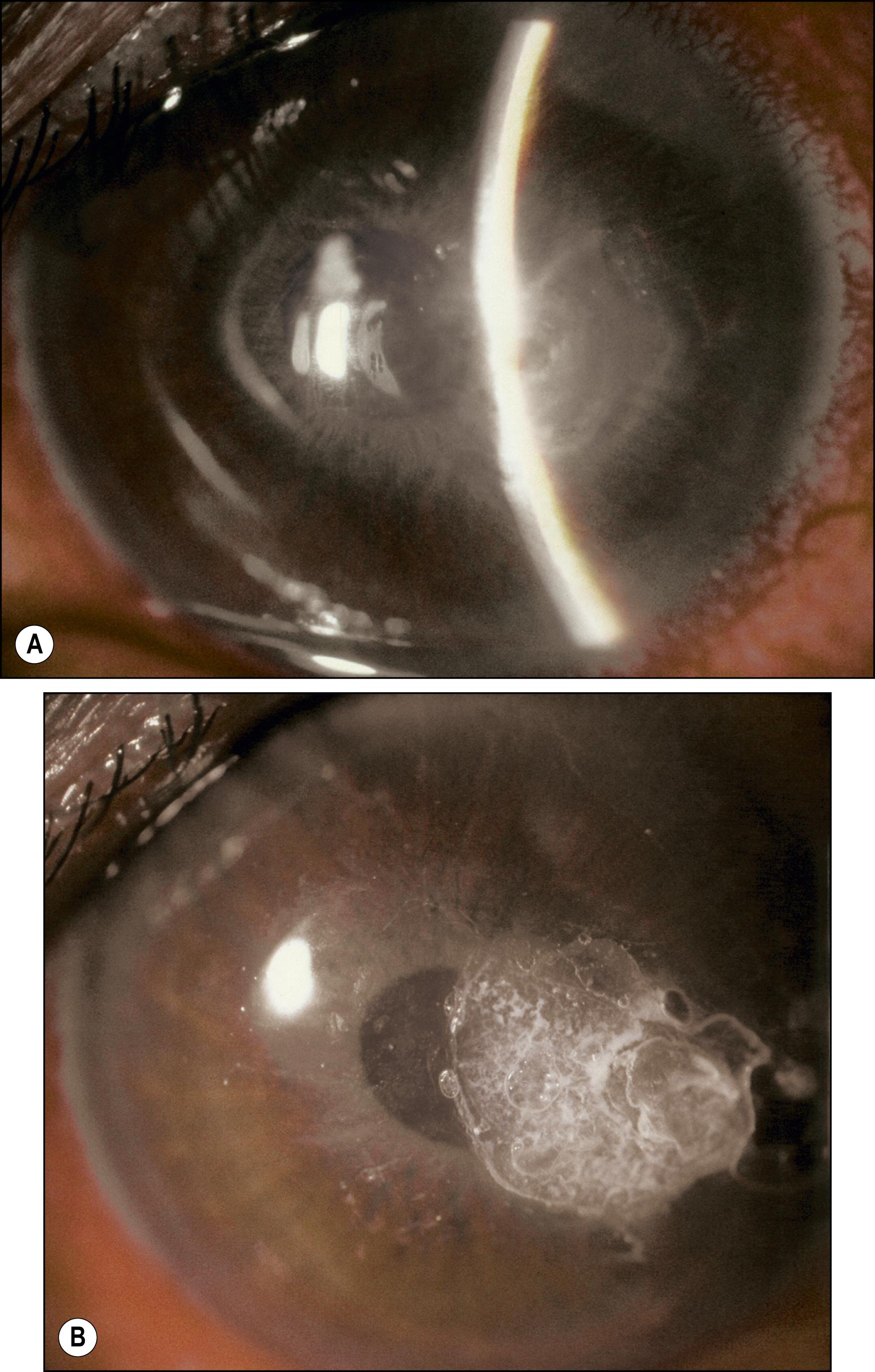
In children, if amblyopia it is not a concern, it may be sensible to postpone surgery until adulthood in order to avoid the challenges of pediatric keratoplasty. Nonetheless, transplants in children with HSV corneal scarring may be successful when combined with good parental compliance, close follow-up, the use of systemic antiviral prophylaxis, and appropriate management of amblyopia.
In the case of herpes infection, the preoperative evaluation of a candidate for keratoplasty should include a complete history, with emphasis on the course of the keratitis (frequency of recurrences, tendency for persistent epithelial defects, and severity of inflammation). This preoperative evaluation can guide the surgeon in postoperative care. It has recently been suggested that preoperative assessment of corneal higher-order aberrations is recommended to evaluate whether corneal transplantation is indicated for the treatment of corneal scar caused by herpes simplex keratitis (HSK). The visual improvement resulting from corneal transplantation may be correlated with preoperative higher-order corneal aberrations, especially with preoperative measurement of the posterior surface.
Active inflammation is considered a risk factor for the survival of a clear corneal graft ( Fig. 125.4 ). Although controversial, it appears that the survival rate in PK performed in inflamed eyes is about 50%, compared with 80% in quiet eyes. , Changes in operative technique and postoperative management (introduction of antiviral prophylaxis) may explain similar outcomes of grafts performed in the presence of inflammation and in quiet eyes. ,
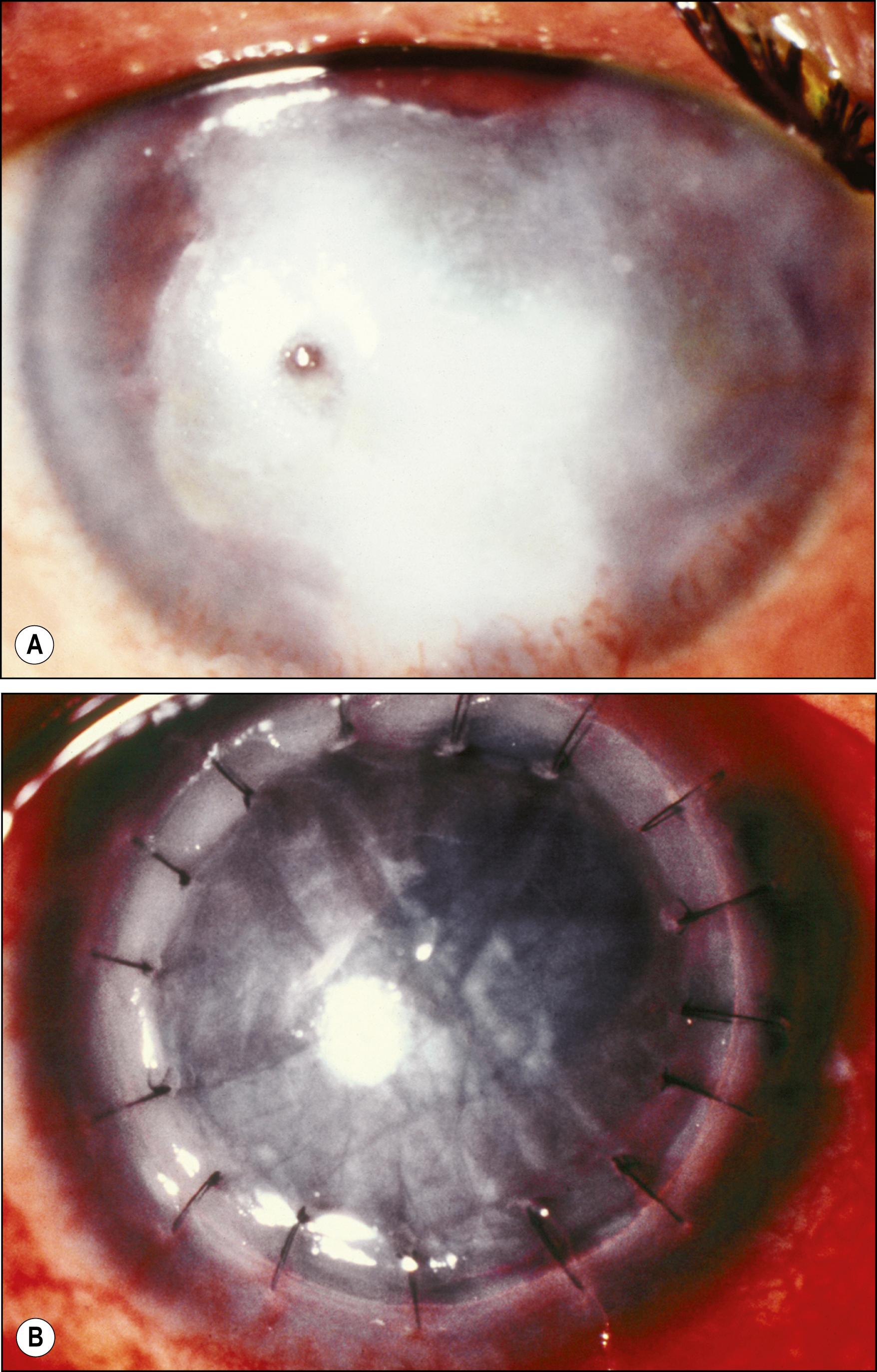
In severely inflamed eyes, pretreatment with topical corticosteroids is helpful. Corticosteroids should then be tapered slowly, first in frequency and later in drug concentration, taking special care not to taper more than half of the dosage at each step. Antiviral prophylaxis is recommended during the use of high-frequency topical corticosteroids. It is important to minimize the inflammation in order to limit damage to the graft and other structures of the anterior segment.
Vascularization of the host cornea can decrease the chances for a clear graft in general and in herpes simplex in particular ( Fig. 125.5 ). , Deep stromal vascularization is more likely to be associated with rejection than is superficial vascularization, but neither should be considered a contraindication to keratoplasty.
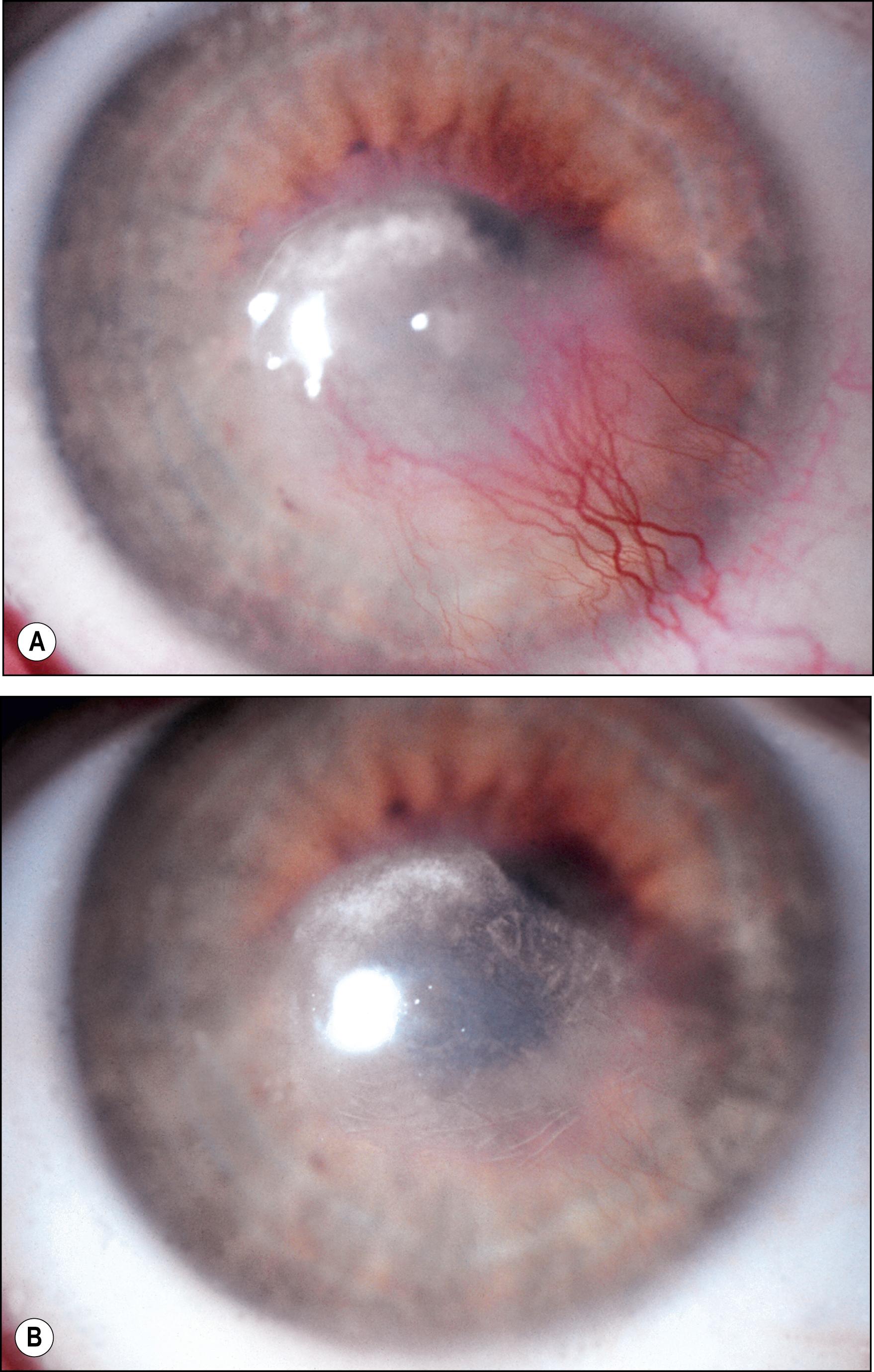
Medical or surgical treatment diminishing neovascularization may be of benefit in keratoplasty for HSV keratitis. Bevacizumab injections may be a promising tool in the treatment of neovascularization in association with corneal transplant surgery. The prolonged use of corticosteroids to inhibit neovascularization prior to keratoplasty can cause undesirable side effects. Argon laser treatment alone or in conjunction with photosensitizing dyes has been shown to decrease corneal lipid deposition. In relation to vessel photocoagulation, it is important to remember that there is a possibility of HSV reactivation with the use of some lasers; this has been reported in the case of herpetic epithelial keratitis after verteporfin photodynamic therapy for corneal neovascularization. Vessel obliteration with fine-needle diathermy has also been reported.
Reduced corneal sensation may cause inhibition of epithelial growth and differentiation with the consequent development of chronic epithelial defects ( Fig. 125.6 ). It is important to check corneal sensation preoperatively, although in HSV keratitis as opposed to herpes zoster (HZ), the hypesthesia may not be severe enough to influence graft outcome. Halberstadt et al. found that decreased corneal sensation may enhance the probability of graft failure, but this did not correlate with the persistent epithelial defect in PK for HSV corneal scarring. In any case, patients with reduced corneal sensation should be followed carefully and closely in the postoperative period. Grafts in patients with herpes simplex disease appear to remain anesthetic for years. ,
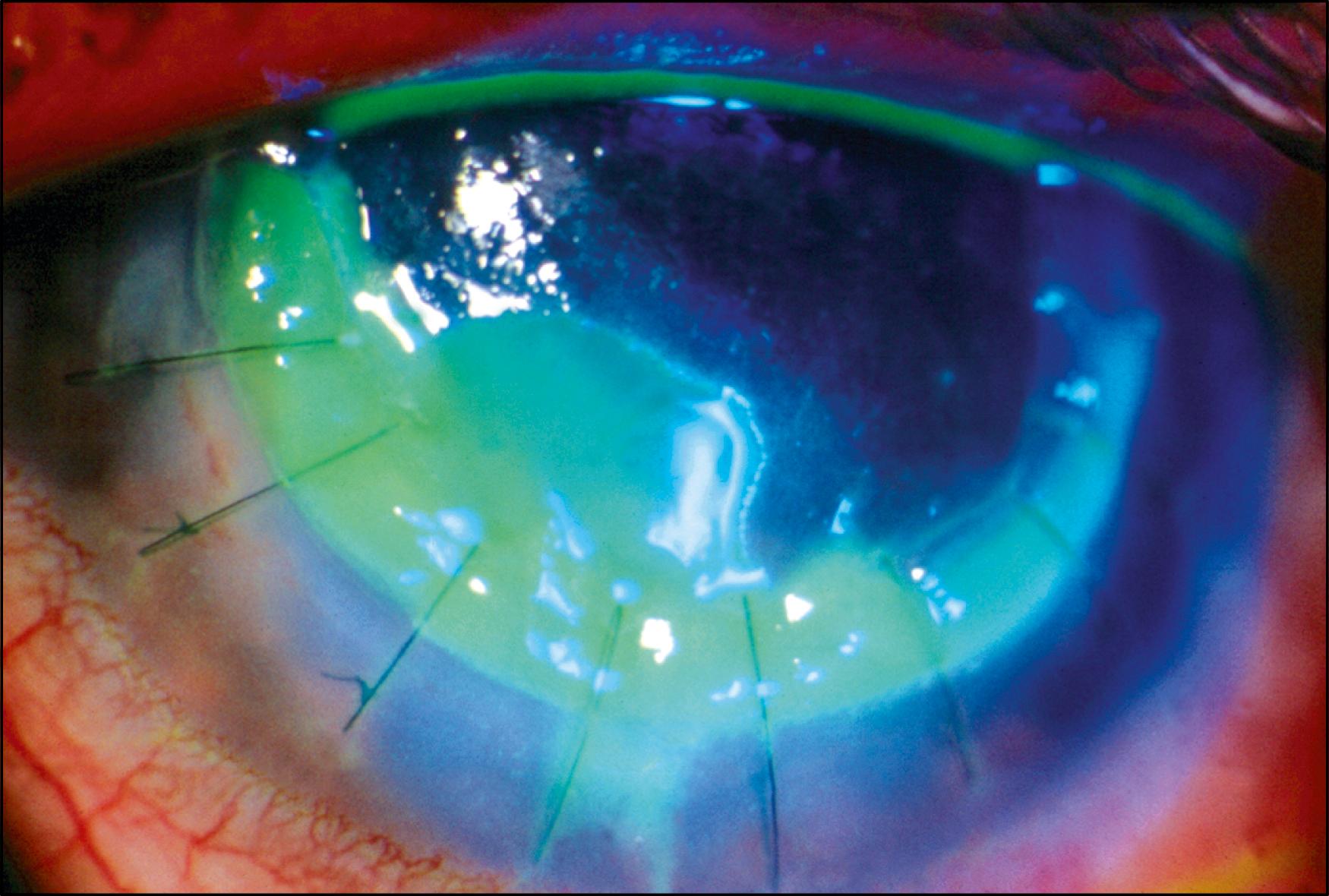
The possibility of recurrence of HSV in a corneal graft ( Fig. 125.7 ) leads to the necessity for efficient antiviral prophylaxis in the postoperative period. The rationale for use of antiviral prophylaxis is based on the understanding of primary and latent infection. Oral antiviral agents inhibit viral replication at the trigeminal ganglion, avoiding recurrence of ocular disease. Topical antivirals do not have the ability to arrest viral replication in the central nervous system. However, if the recurrence appears, they may locally inhibit viral replication. The literature suggests that patients receiving oral antiviral medication postoperatively had consistently better graft survival than those receiving no medication or only topical medication, and although multivariate analysis was suggestive of a reduced risk of graft failure with topical treatment, this did not reach the 5% level of significance.
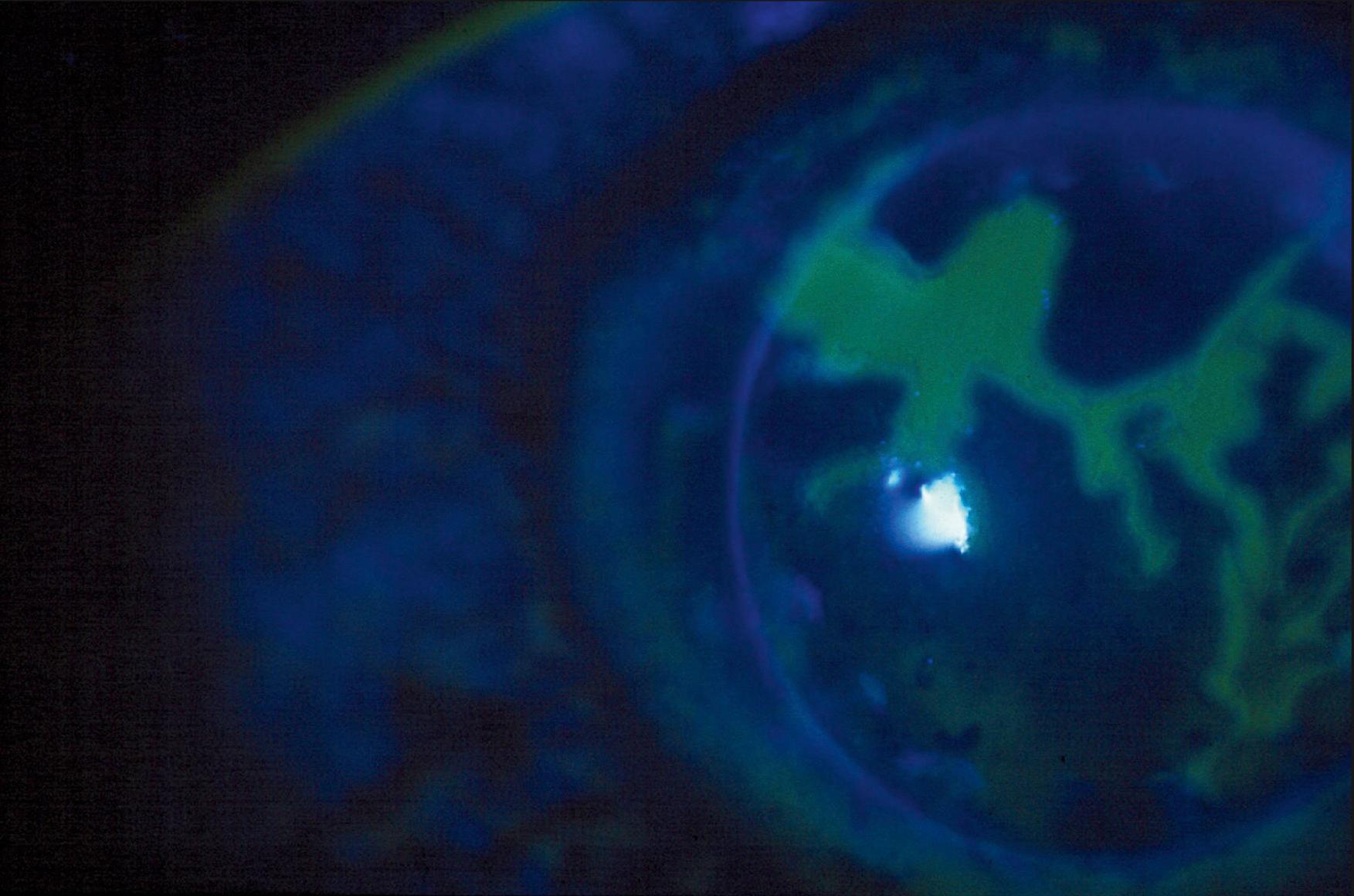
Long-term treatment with systemic antiviral drugs has proved effective in preventing recurrences of genital, oral, ocular, and mucocutaneous HSV disease. In both immunocompetent and immunocompromised hosts, acyclovir (ACV) therapy demonstrated a high degree of clinical efficacy. Rate reductions have been 45% for keratitis. ,
ACV is frequently used in the prophylaxis of HSV recurrence after PK for herpetic keratitis. , Although ACV therapy may not prevent recurrent episodes of HSV infection in corneal grafts completely, it does prolong the recurrence-free interval and reduces the duration of herpetic disease. A Cochrane database of systematic reviews on oral antivirals for preventing recurrent HSV keratitis in corneal grafts revealed that compared with placebo or to no treatment, oral ACV may reduce the risk of recurrence of herpetic keratitis in the first 12 months.
Based on data from the included trials, this corresponds to approximately 23 fewer cases of HSK recurrence (95% CI 29 fewer cases to 12 fewer cases) per 100 corneal graft operations if oral ACV is used. Oral ACV may also reduce the risk of graft failure. Based on data from the included trials, this corresponds to approximately 13 fewer cases of graft failure (95% CI 18 fewer cases to 1 fewer cases) per 100 corneal graft operations if oral ACV is used. Prophylactic oral ACV use after PK for HSV keratitis is also associated with decreased episodes of rejection and improved graft survival. Recently a graft survival rate of 75% at 5 years has been reported in patients receiving oral antiviral treatment with more than a threefold reduction in risk of graft failure at 5 years compared with those not receiving any antiviral medication when the bias from additional variables was accounted for. Systemic ACV is generally well tolerated, and it has been demonstrated that there are no statistically significant differences between ACV and a placebo for mild or major adverse events. The benefit of prolonged systemic antiviral prophylaxis is not sustained after treatment cessation. A suggested prophylactic regimen for herpetic keratitis can be based on studies related to HSV antiviral prophylaxis such as the Herpetic Eye Disease Study (HEDS), studies on prophylaxis of genital and labial herpes, after laser resurfacing procedures, after excimer laser, and in transplant recipients, among others. For ACV, 400 mg twice daily has been the most commonly employed prophylaxis regimen for HSV recurrences; for valacyclovir, it was 500 mg once daily. It has been demonstrated that 1-year suppression therapy with oral valacyclovir (one 500-mg tablet once daily) is as effective and as well tolerated as ACV (one 400-mg tablet twice daily) in reducing the rate of recurrent ocular HSV disease. Prophylactic valacyclovir is at least as effective as ACV in preventing recurrence of HSV keratitis following corneal transplantation and equally effective concerning graft survival. The potential benefits of valacyclovir include higher plasma levels of the drug and reduced frequency of administration.
In general, most agree on a period of 1 year of prophylaxis or longer after a corneal graft to accompany topical steroids administration if necessary.
Uveitis, glaucoma, virus recurrence, and recurrent graft rejection episodes, all of which damage the corneal endothelium, may occur after PK for herpetic keratitis. This fact argues for selecting donor tissue with a higher endothelial cell density. Although there are no studies to support this concept, a higher incidence of early graft failure in herpetic patients who have active inflammation at the time of surgery has been observed.
Persistent epithelial defects may develop after PK for herpetic keratitis. Although retrospective studies do not demonstrate a difference in the incidence of persistent epithelial defects between donor corneas with intact epithelium and those in which epithelium was removed at the time of surgery, it may be safer in herpetic cases to use tissue with an intact epithelium and without exposure damage. The time interval from preservation to surgery has been shown to have a statistically significant association with the degree of epithelial defect. Therefore the surgeon should choose tissue with a short preservation time, particularly when PK is performed on patients with herpes simplex or ocular surface disorders.
Become a Clinical Tree membership for Full access and enjoy Unlimited articles
If you are a member. Log in here